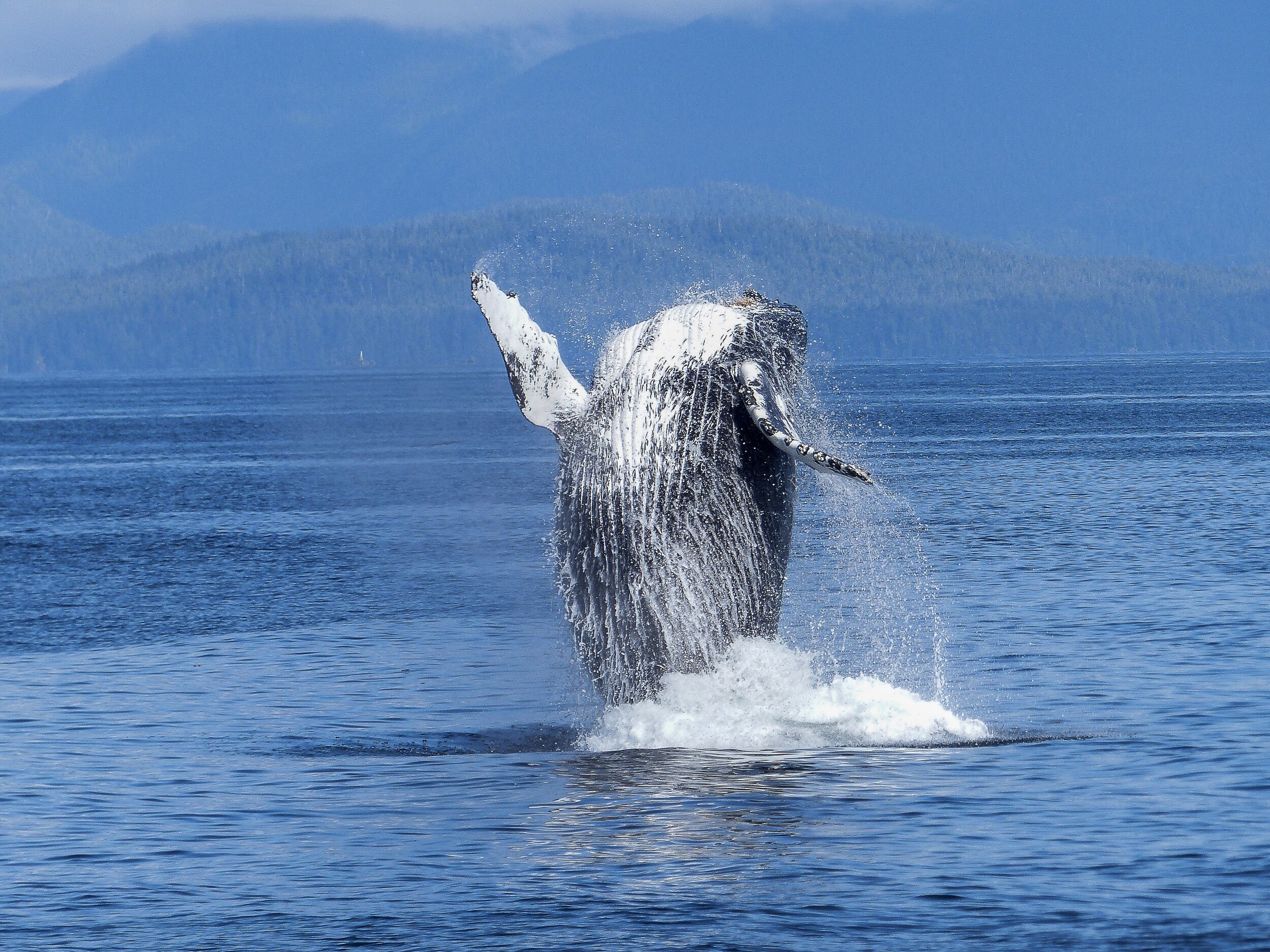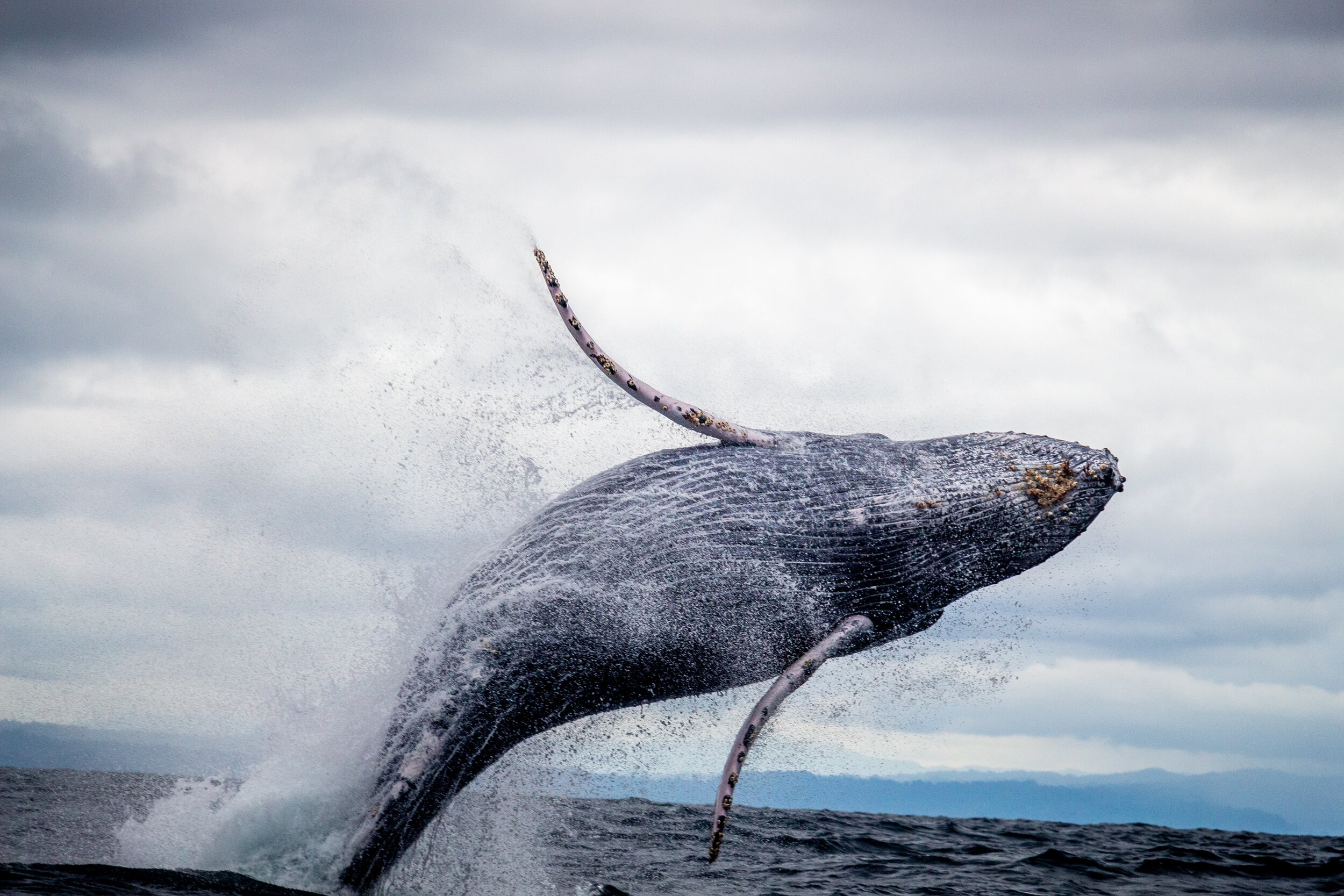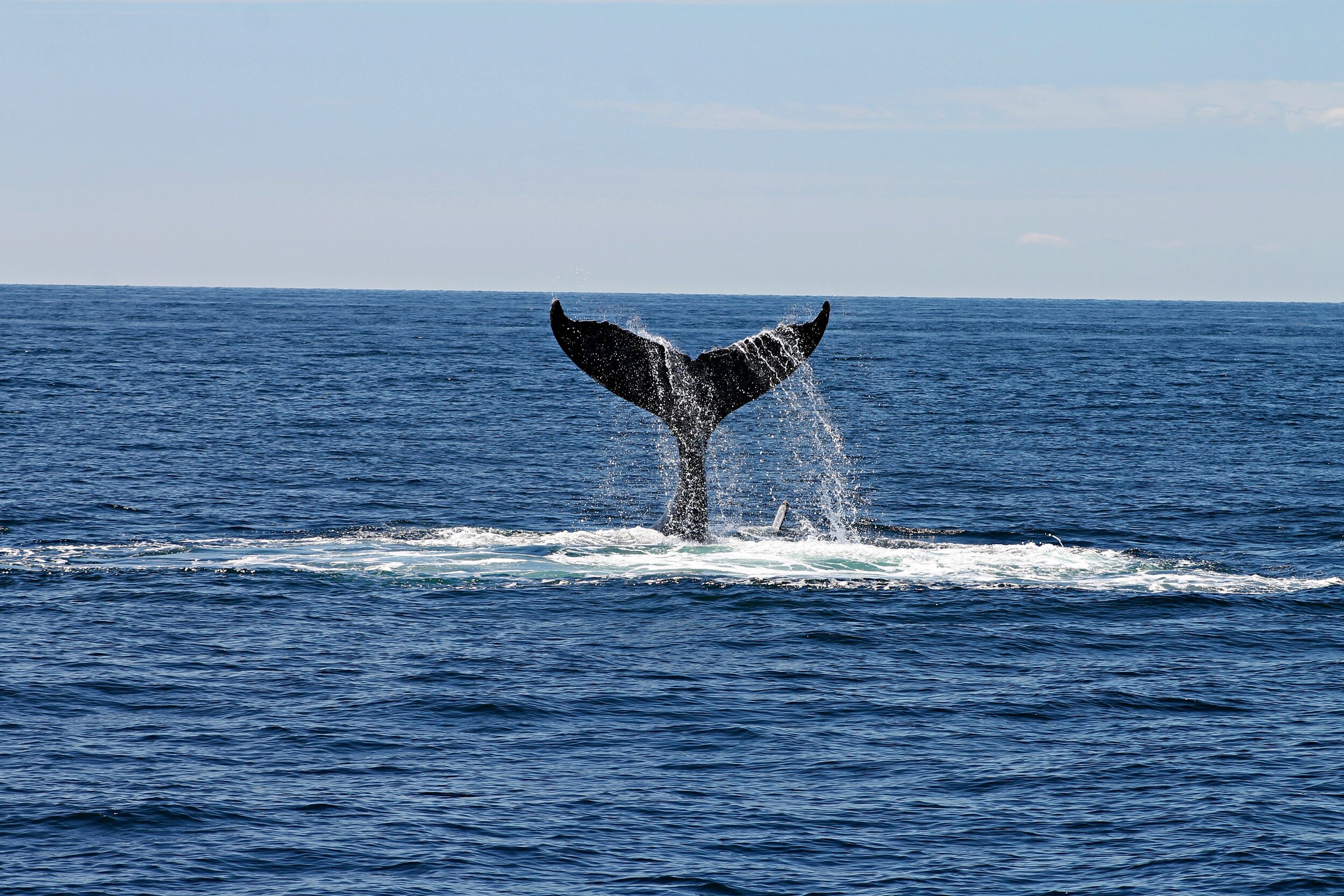Counting the Grays by Julie Sharp
Counting the Grays
by Julie Sharp
One of nature’s greatest shows happens here on the Palos Verdes Peninsula coastline and the best seats are at the Point Vicente Interpretive Center in Rancho Palos Verdes. It’s gray whale southbound migration season, and the peak travel time is about to hit.
Point Vicente Interpretive Center in Rancho Palos Verdes has been an official whale counting spot for 37 years, where citizen scientists along with the Director of the Gray Whale Census and Behavior Project, Alisa Schulman-Janiger, keep this lookout manned seven days a week starting December 1 through mid-February.
With a bit of training, volunteer whale counters soon teeter over to the experts, shouting things like "blow," "breach," "what's your reading," "310 degrees, 25 mils," definitely an insider's dialogue.
Volunteer whale counter Tony Carillo peacefully waits in search of a blow, a splash, a fluke or the back of a whale. He's been doing this for 11 years, and for him its therapeutic. "If you live in a traffic area like Los Angeles, where its bumper to bumper and you come up the hill, your blood pressure drops down about 10 points. That's how healthy it is," said Carillo.
Every day is different looking for the whales, some days there are a lot, and some days there are none. Volunteer Daniel Genuth recalls a recent exciting Thursday. "There were seven grays coming through and there were about 50 people here. We were all chatting, talking, trying to teach and communicate at the same time what we were seeing, how many we were seeing, if they were fluking or not, how many blows we were seeing. It's hectic, but it's a lot of fun because you have so much support and energy around you," said Genuth.
Schulman-Janiger explained there's no way to count every single one of the migrating whales. Many take a less coastal, offshore route from the northern waters to warm water lagoons in Mexico.
Last year 215 gray whales were found dead along the migration path and an Unusual Mortality Event was declared. Since this count has been in place over the last 36 years an Unusual Mortality Event has occurred only two times, last year and previously in 1999-2000. The reason? Schulman-Janiger said last year the whales spotted were skinny and unhealthy, leading many to believe there was a food issue in Alaska. Researchers are still trying to pinpoint the cause.
It is unknown what will happen this year with the count, and it’s still very early in the migrating season. Schulman-Janiger said the whales they have seen so far appear to be healthy and not as skinny one's spotted last year, but she warns it's still too soon to tell.
While being an official counter takes a bit of training, Schulman-Janiger said anyone can come to the lookout spot to watch and be another set of eyes searching for that blow or splash. The center has binoculars to loan.
Julie Sharp is a video journalist for a major broadcast news corporation in Los Angeles. She also wrote for the Beach Reporter weekly newspaper covering the city of Manhattan Beach. She is a South Bay native, attended Mira Costa High School and majored in print journalism at California State University Long Beach. She currently resides in Palos Verdes Estates. Much of her current work is shared in photos at:






